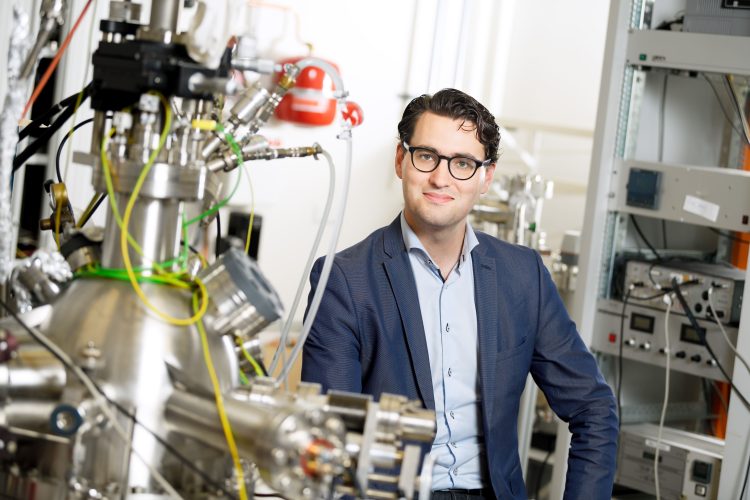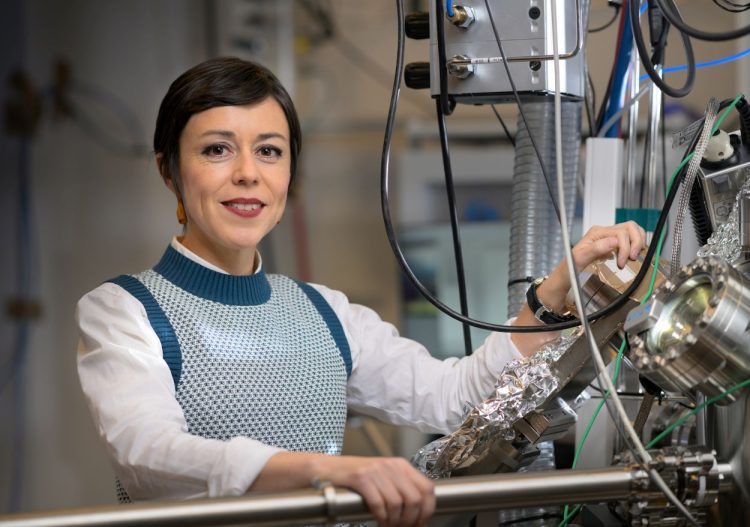
LMPV Annual Symposium: Light management, materials design and fabrication for photovoltaics
Friday, June 7, 2024 | 9:15-17:00 | NWO Institute AMOLF
Registration is closed now
LMPV Symposium 2024
At this symposium we discuss the latest developments in light management, materials design and fabrication for the creation of high-efficiency solar cells for a wide range of applications. The program consists of four talks by renowned keynote speakers. The symposium is intended for everyone in solar cell research and development and provides a broad overview of exciting directions in photovoltaics. We will also have a special session on how to further enhance PV collaboration in the Netherlands: National Growth Fund, SolarLab academic PV network
Registration for the workshop is free of charge. We look forward to welcoming you on June 7.
Read here more info on our LMPV research
Keynote speakers
- Juliane Borchert (University of Freiburg)
- Mark Boneschanscher (Eindhoven University of Technology)
- Monica Morales‐Masis (University of Twente)
- Olindo Isabella (Delft University of Technology)
Juliane Borchert
Metal Halide Perovskites – Tuning the Next Generaton of Solar Cells

The looming climate crisis makes a rapid transition towards renewable energies necessary. One major contributor to this transition are photovoltaic solar cells. Currently the vast majority of commercially available solar cells are based on the semiconductor silicon. In the last decades a lot of research and development has gone into the optimization of silicon solar cells. As a result, their efficiencies are now coming close to the theoretical limit for silicon and new strategies and materials are needed to further improve solar cells. A very promising group of materials are the metal halide perovskites. They combine many intriguing properties from a tunable bandgap to processibility at low temperatures. This has led to them being investigated for use in a wide range of semiconductor devices including solar cells and LEDs as well as photodetectors, transistors and even lasers.
In this talk I will introduce you to this intriguing material class and show promising methods to scale it to industrial sizes. I will give insights into the advantages of vacuum-based deposition techniques and the high solar cell efficiencies that have been achieved with them. I will also illuminate which gaps in understanding need to be investigated further and how this research area may develop in the coming years.
Mark Boneschanscher
Modular scaling to speed up the energy transition

The energy transiton is one of the largest challenges of our generaton. To achieve an economy with netzero greenhouse gas emissions in 2050 asks for a complete overhaul in the way we produce, transport, store, and use energy – in a very short period of time. This asks for quickly scalable technologies and an adaptive lay‐out of our future energy system.
In this lecture, Mark Boneschanscher will provide an overview of where we currently stand in this transiton and indicate promising pathways to move forward. He will discuss the role of modularity in the development of different energy technologies and explore what this implies for the development of PV.
Olindo Isabella
From modelling to realization of high-efficiency crystalline silicon heterojunction solar cells

Silicon heterojunction (SHJ) solar cells have achieved remarkable efficiencies, reaching 26.8% and 27.1% in front/back-contacted (FBC) and interdigitated-back-contacted (IBC) configurations, respectively. Leveraging their high open-circuit voltage and excellent infrared response, SHJ solar cells can be perfectly combined with wide bandgap perovskite cells to form multi-junction devices exhibiting efficiency well above 33%. Combining theoretical insights and experimental investigations, this study presents efforts at TU Delft to enhance the efficiency of SHJ solar cells. By employing advanced opto-electrical modelling, optimizing Si-based thin film layers and implementing electrodes with reduced indium and silver usage, we gain a deep understanding of light management, interfacial properties, and charge carrier transport mechanisms. Our findings emphasize the importance of evaluating compositional materials as part of contact stacks with adjacent layers to achieve optimal device performance. Ultimately, we demonstrate the fabrication of FBC-SHJ solar cells, achieving efficiencies of 24.18% and 23.62% in monofacial and bifacial configurations, respectively.
Monica Morales‐Masis
Vacuum- and laser-based deposition of metal halide perovskites: from dry mechanochemical synthesis to solar cell devices

The dominance of vacuum- and vapor-phase deposition in semiconductor technology extends to various applications, such as commercial thin-film PV manufacturing. Physical vapor deposition (PVD) of thin film materials offers distinct advantages, including conformal deposition, precise thickness control, and scalability. An underexplored alternative within PVD for metal halide perovskites (MHP) is pulsed laser deposition (PLD). We have recently demonstrated that PLD facilitates single-source vapor phase growth and stoichiometry control of MHPs; and solar cell devices with PLD-perovskites exceeding 19% efficiency. Furthermore, the growth control afforded by PLD, encompassing thickness and deposition rate, allows the epitaxial formation of MAPbI3 on lattice-matched substrates. In this presentation, we will discuss the developments and future perspectives for PLD of MHPs, going from the mechanosynthesis of the perovskite powders, all the way to thin film growth control and solar cells.